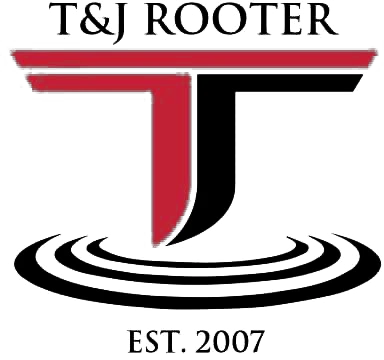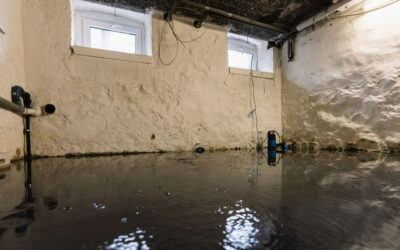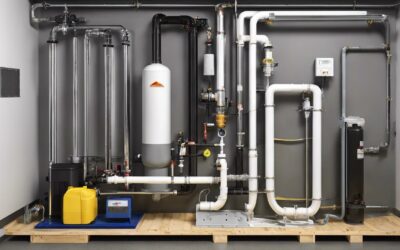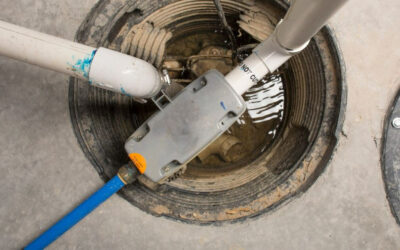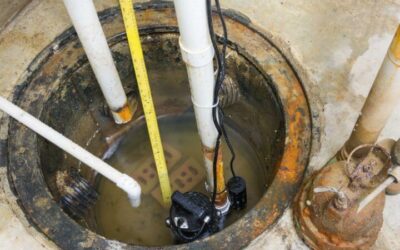When your sump pump kicks into action, it sends excess water on an important journey away from your house. This process is crucial to guard your home from harmful water damage like basement flooding or mold growth. Now, the surprise here is that the water isn’t just banished aimlessly, but is directed wisely to a predefined discharge point. But remember, this journey of water can have impacts, especially when it carries little unwelcome guests such as sediments or pollutants. T&J Rooter Service specializes in sump pump services, ensuring that your system efficiently removes excess water. Call on our Toledo plumbing services 24 hours a day, and 7 days a week So now, let’s follow the path of this discharged water.
Pathway of Water from Sump Pump
The water collected by the sump pump needs to be discharged somewhere safe to prevent it from seeping back towards your foundation. One common method involves directing the water to a municipal storm drain or a well-graded area where the water can naturally percolate into the soil without causing any damage to your property.
But this isn’t always as simple as it sounds. Sometimes, homes don’t have suitable areas for natural percolation, and the route to a municipal storm drain can be far enough that additional plumbing is needed to get the water there. In those cases, sump pump discharge lines are installed to expel the water safely.
Best Practices for Discharge
In most households, you want this pipe to discharge less than 20 feet away from your house and prefer not to direct it toward your neighbor’s property. It’s also important that the water doesn’t pool around your home, so ensuring it flows freely away from the house will help mitigate potential damage.
If you’ve got a finished basement or live in an area with freezing temperatures, an underground discharge system may be installed; this helps prevent issues related to freezing or tripping hazards.
Regardless of where the water goes, what’s critically important is that it moves away from your home’s foundation. The last thing anyone wants is for all of this hard work keeping your home dry could be undone by improper disposal of that excess water.
By the time that water leaves its discharge point and continues on its journey, you should expect it to blend harmlessly into nature, never causing problems for you or your neighbors. So remember, getting that excess water away from your house properly doesn’t just protect your home now—even more importantly, it protects its future.
As crucial as it is to ensure proper sump pump discharge practices for protecting your home and its surroundings, it’s equally vital to understand the environmental impact of this process. Let’s explore how sump pump discharge may affect the environment and what best practices we can adopt to minimize negative consequences.
Environmental Impact of Discharge
When the sump pump pumps out water from your basement, it’s essential to consider where all that water goes. In many cases, this water isn’t just ordinary; it can contain a mixture of sediments, pollutants, and chemicals used around the home. These elements need to be given serious thought since they could have harmful effects on vegetation, soil quality, and nearby bodies of water if not managed properly.
The chemicals and cleaning products that accumulate in your home can make their way into the discharged water. This means things like detergents, pesticides, and other potentially harmful substances can end up being pumped into the natural environment.
Mitigating Environmental Impact
So, you may wonder, what can be done to mitigate this impact? One way is through proper filtration methods before discharging the water. Utilizing filters that capture sediments and contaminants can greatly reduce the environmental harm caused by the discharged water.
Another method is to promote natural discharge whenever possible. Allowing the discharged water to filter naturally through grassy or vegetative areas helps to remove some of the pollutants before it makes its way to nearby streams or other water bodies.
In many areas, there are strict regulatory requirements governing the discharge of sump pump water. Before considering any form of discharge, it’s essential to familiarize yourself with local regulations and guidelines.
All in all, minimizing environmental harm should play a pivotal role in handling sump pump discharge. It’s not just about keeping our homes safe and dry but also about ensuring we don’t unknowingly contribute to harm in our surrounding environment.
Now that we’ve explored the environmental impacts of sump pump discharge and ways to mitigate it, let’s examine the destinations for this discharged water.
Water Discharge Destination
The discharge pipe connected to your sump pump is critical for carrying any excess water away from your home. However, ensuring that it works effectively and responsibly involves contemplating the water’s final destination. Improper disposal can result in a range of issues affecting both your property and the surrounding environment.
Properly managing discharge involves redirecting the water away from your foundation to prevent flooding in your basement or around your home. Equally vital is that the water doesn’t end up causing harm to other areas. Careful redirection ensures the treated water dissipates safely without posing risks to natural habitats.
For most homes, discharging sump pump water into a public sewer system or nearby streams is not advisable, as it can overwhelm these systems and introduce pollutants typically found in the ground around our homes. Instead, some common discharge destinations include:
- Storm Drain: A municipal storm drain system can effectively manage excess sump water. However, local regulations should always be checked for compliance.
- Dry Well: This is a perforated underground chamber designed to accept stormwater and allow it to slowly percolate into the soil, reducing the risk of soil erosion.
- Designated Drainage Area: A dedicated area on your property where the water can safely dissipate without causing damage. This could be a sloped area planted with vegetation that naturally absorbs water.
Given increasing environmental awareness and more stringent regulations, proper management of sump pump discharge isn’t just about avoiding fines. It’s also about minimizing harm while potentially benefiting surrounding lands. When properly channeled, this collected water can even be used to benefit certain plants or gardens on your property.
Furthermore, taking proactive measures by ensuring proper discharge will also help avoid any issues with neighbors or local authorities who might take issue with how excess water from your property affects theirs.
Considering all these factors when determining where the discharged water will go is a great step towards being environmentally conscious while also safeguarding your property from potential water damage.
By being mindful of where sump pump discharge goes and understanding its implications, we lay the foundation for investigating how local drainage systems play a pivotal role in mitigating these concerns.
Role of Local Drainage System
When it comes to handling the discharged water from your sump pump, a reliable local drainage system is like a superhero, always there to save the day. Imagine this system as the vigilant protector that keeps an eye on your property and ensures that no watery foes invade your home.
The local drainage system is the unsung hero that prevents potential flooding and groundwater problems around your property. Without proper maintenance and regular inspections, this vigilant guardian can be rendered ineffective. Just like any hero’s tools, the components of the local drainage system — storm drains, gutters, and downspouts — work together in harmony, ensuring that excess water never overstays its welcome.
Think of storm drains as the ultimate escape route for excessive rain or groundwater; they whisk it away to prevent it from gathering around your property. Gutters, on the other hand, are like sentries, lining up along your roof’s edge to catch rainwater and direct it to the downspouts. And those downspouts? Well, they’re like conductors, guiding excess water safely away from your home’s foundation.
Remember that each one of these components must be kept clean and functioning properly for this vigilant protector to continue guarding your home against flooding and water-related perils. This calls for regular maintenance and periodic inspections to ensure that these components don’t falter when you need them most.
So, while we may not give much thought to these silent guardians every day, their significance cannot be overstated. The interplay of these elements makes them an indispensable part of managing discharged water effectively and keeping your property dry and secure.
Now that we’ve explored the crucial role of the local drainage system in ensuring the safety of our homes from discharged water, let’s move on to uncover its effects on our yard and garden.
Effects on Yard and Garden
Improper sump pump discharge can lead to a range of negative effects on your yard and garden. One common issue is excessive water accumulation around the foundation, which can cause soil erosion. You’re building a sandcastle at the beach. The sand starts to soften and crumble away as water collects near the foundation or in low-lying areas, similar to what happens in your yard. This weakening of the soil can damage plants and trees; their roots may become exposed or deprived of oxygen due to standing water.
For instance, improper sump pump discharge could potentially cause a stagnant pool of water that drowns out your beautiful grass. Prolonged ground saturation can also lead to puddles, mud pits, and other unpleasant spots that make it difficult for you to enjoy your garden or yard space.
Areas repeatedly exposed to excess moisture face ongoing maintenance challenges. Maintaining proper drainage around your property ensures healthy soil conditions and well-fed plants rather than waterlogged despair.
Understanding all these problems shows why finding proper solutions for sump pump discharge is essential. It will not only keep your yard looking good but also ensure that your plants stay healthy and strong for years to come.
So, understanding the ramifications of improper sump pump discharge leads us to discover effective solutions for this issue, creating an environment where gardens and yards flourish effortlessly.
Post-Discharge Water Cycle
The discharged water from a sump pump embarks on an essential journey upon leaving the drainage system. After reaching designated drainage areas, it becomes part of a natural process that benefits the environment in numerous ways. As it permeates through the soil, it acts as a vital source of moisture for plants and plays a key role in recharging groundwater, thereby supporting the local ecosystem’s environmental stability.
This water not only benefits nearby flora but also replenishes underground water reservoirs, ensuring stable and secure drinking water sources for human consumption. By directly contributing to this cycle, the discharged water plays an active role in preserving local groundwater resources, ensuring sustainability for the future.
The return of water creates a balanced and sustainable environment where underground aquifers are replenished, benefiting not only plant life but also ensuring stable and secure sources of drinking water. The seemingly small act of discharging water significantly maintains environmental equilibrium, supporting plant life and nurturing the natural surroundings.
Imagine this like a give-and-take relationship: the discharged water provides much-needed moisture for plants and trees, while they, in turn, help filter out impurities and maintain healthy soil, ultimately enriching the surrounding natural environment. It’s fascinating how each component supports each other, creating a harmonious cycle.
Understanding this post-discharge water cycle enables homeowners to appreciate the significant role of their sump pump systems in supporting their immediate surroundings. They contribute to a healthier ecosystem overall.
Now equipped with a deeper understanding of the ecological impact of sump pump discharge, let’s transition to exploring the regulations governing this crucial element of home infrastructure.
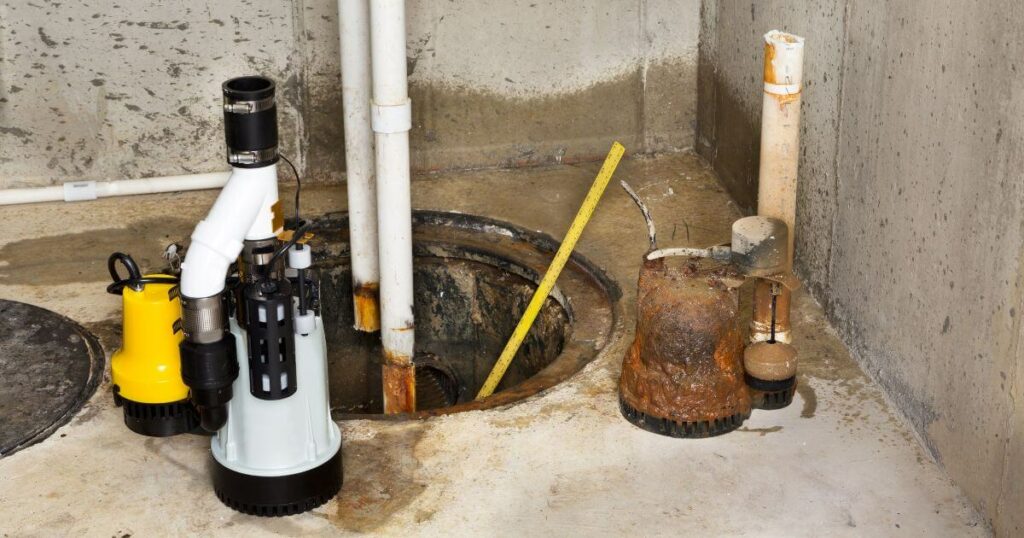
Regulations Governing Sump Pump Discharge
Localities have regulations for a reason—to protect the environment and mitigate potential groundwater contamination. Allowing the water from your sump pump to freely flow can pose serious risks. It’s not just about keeping your basement dry; it’s about ensuring that your sump pump discharge doesn’t harm the environment or the community around you.
Managing Runoff
These regulations help manage the runoff water from multiple properties to prevent overloading the drainage systems, including municipal sewers and local waterways. This is vital because excess water can cause overwhelmed drainage systems to release raw sewage into rivers and lakes, which contaminates the water and poses health threats.
Protecting the Environment
Many areas have specific guidelines about how far away from properties sump pump water should be discharged, often requiring it to be directed at least 20 feet from any building. This measure prevents damage to home foundations and ensures that pumping doesn’t contribute to flooding neighboring buildings.
In Toledo, Ohio, where T&J Rooter Service operates, the City of Toledo Stormwater Program has guidelines in place for discharging sump pump water. According to the city code, homeowners cannot discharge their sump pumps into a sanitary sewer system unless they obtain a special waiver from the Division of Environmental Services.
By understanding and adhering to these regulations, homeowners play a role in upholding environmental responsibility and preventing potential damage to neighboring properties. Ignoring these rules can result in sizable fines and legal consequences on top of negative impacts on public health.
Failing to comply with these regulations can lead to serious repercussions. Homeowners might face hefty fines, lawsuits filed by affected neighbors, and even containment orders if it’s found that their discharge has caused contamination or damage to surrounding properties.
By following these regulations, you’re helping safeguard your community’s well-being and preserving the environment. It’s more than just following rules; it’s about being a responsible member of your local ecosystem.
For residents of Northwest Ohio and Southeast Michigan looking to ensure that their sump pump discharge adheres to local regulations, Contact T&J Rooter Service today or call 419-474-8774.

